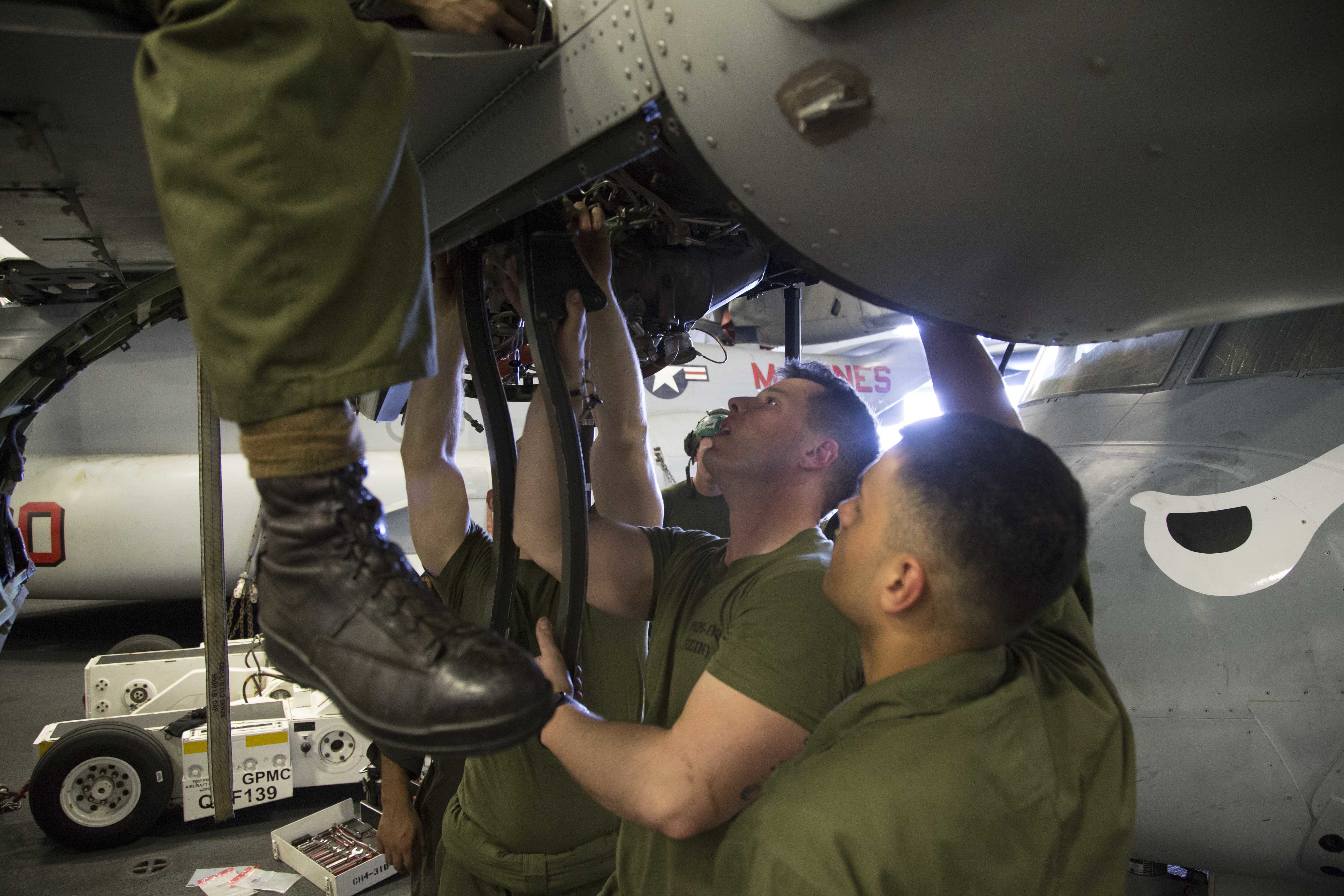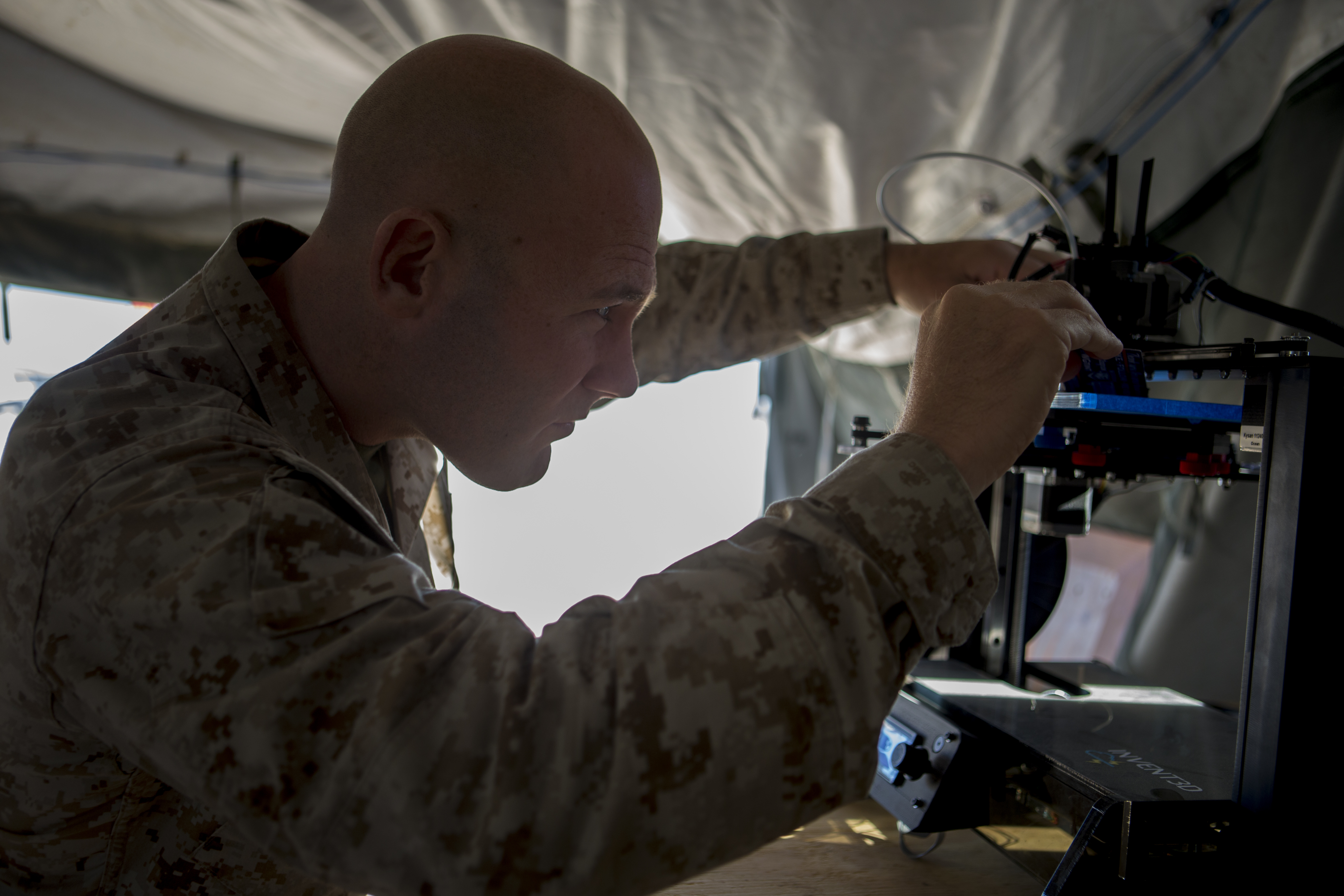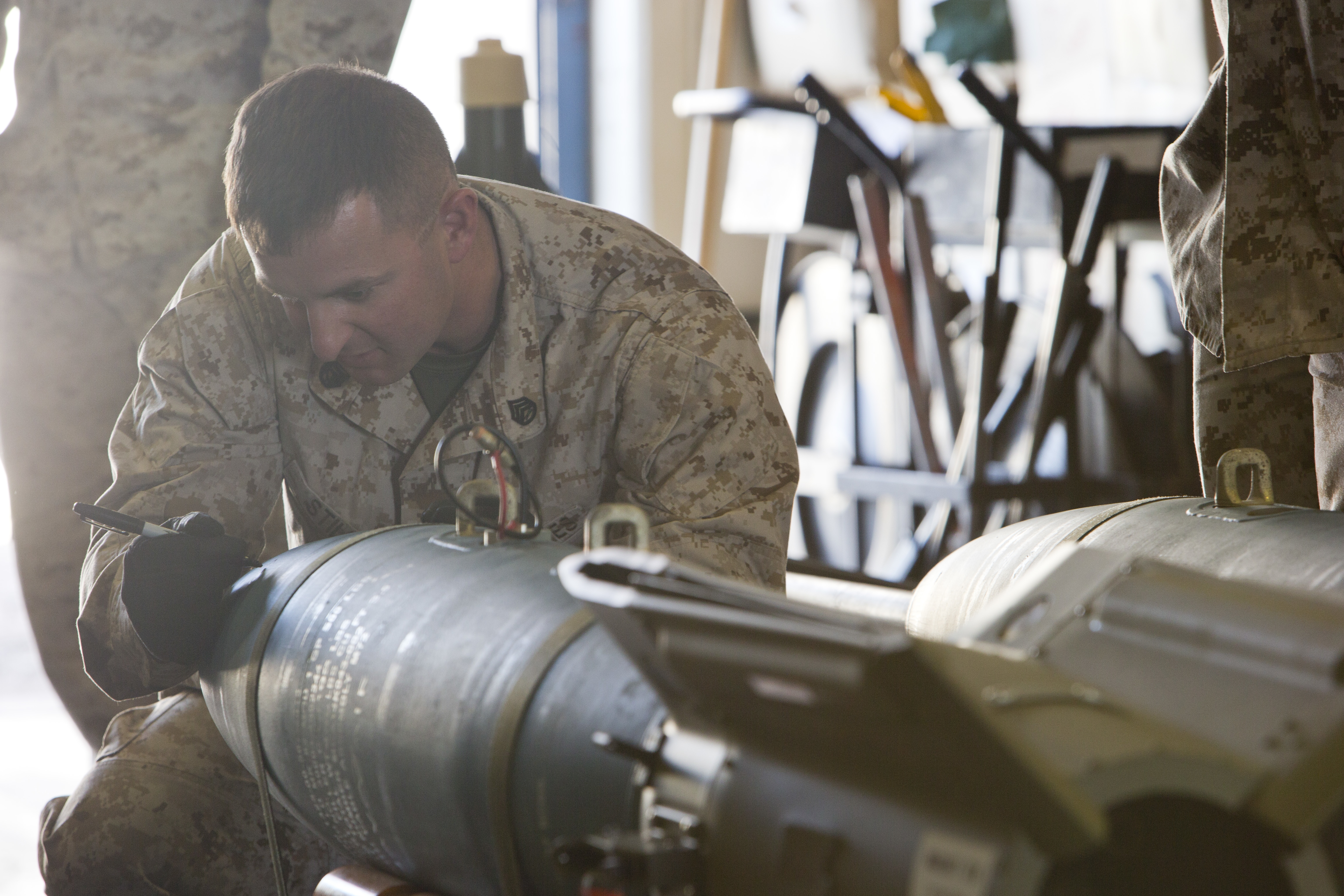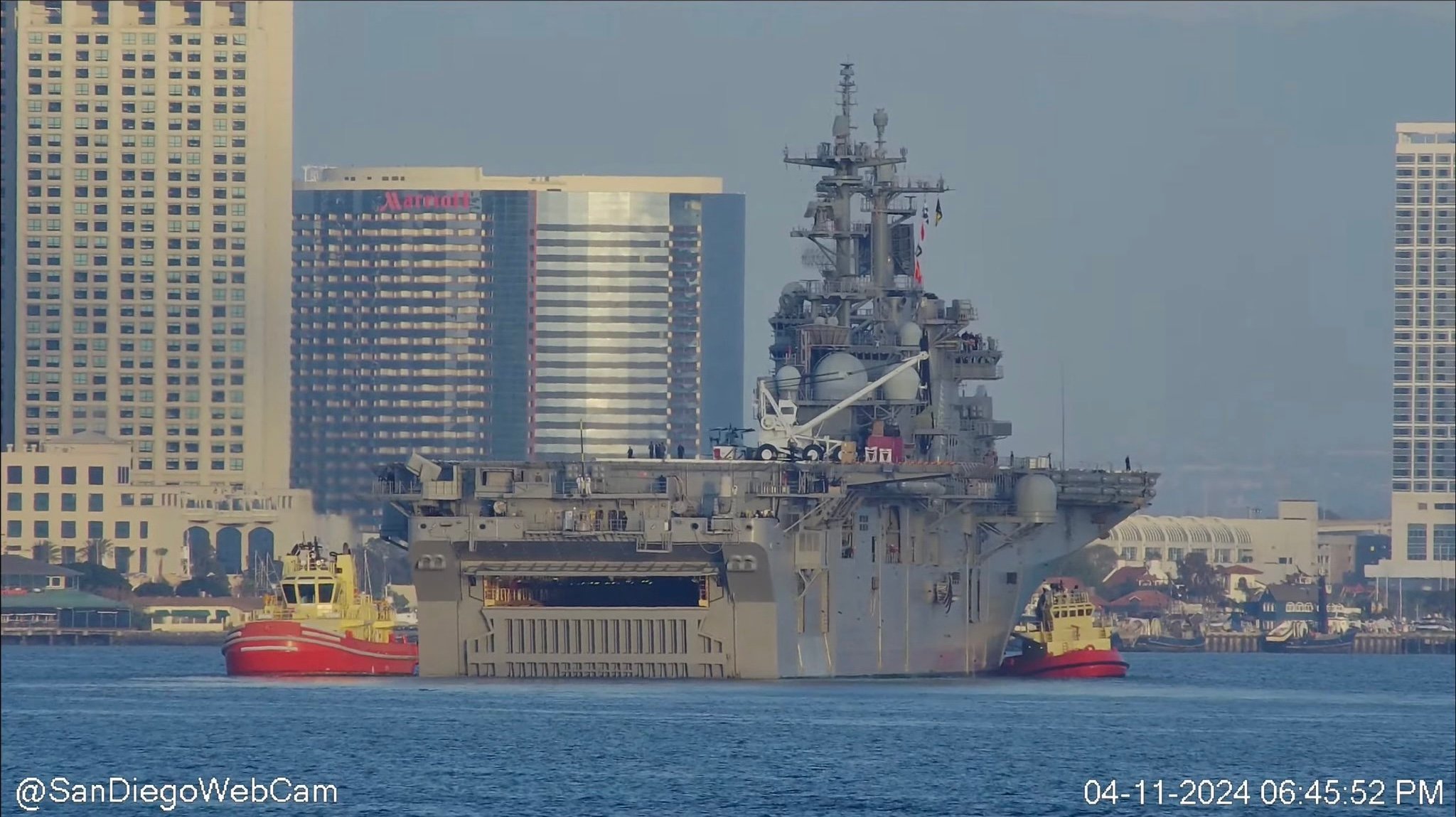
The Marine Corps is focused on aviation logistics as a means of regaining readiness, and an extensive “Marine Aviation Logistics Plan” outlines ideas to boost professional development opportunities and modernize sustainment to keep up with how the fleet employs its aviation squadrons.
The aviation logistics plan, explained in the service’s new 2017 Marine Aviation Plan, seeks to “modernize existing and time-tested AVLOG safety, training, and support strategies, as well as capitalize on emerging capabilities and technologies offered by today’s commercial and military industrial base. Collectively, these efforts will enhance the ACE (air combat element) by improving the readiness (e.g. safety, effectiveness, reliability and availability) of Marine Corps aircraft.”’
The plan’s first line of effort focuses on the maintainers themselves. The aviation logistics community will look for opportunities for Marines to step outside the corps and learn new skills and new approaches to aircraft maintenance. For example, the plan recommends industry exchanges to let Marines see how other businesses conduct aviation maintenance and bring back best practices, and it calls for non-traditional training opportunities such as a 3D scanning and printing training event hosted by Naval Air Systems Command (NAVAIR) last summer, which was designed for science and technology experts but was also attended by several Marines.
To address known problems within the aviation maintenance and logistics community, the plan recommends several new courses. An Avionics Officer and Avionics Chief Course will be created for newly promoted officers and master sergeants to address issues such as “Aircraft Survivability Equipment, Electronic Countermeasures Equipment, Electronic Keying Material, Laser System Safety, Digital Interoperability, and 5th Generation Avionics systems,” according to the plan.
An Advanced Aviation Management Training (AAMT) Course for “maintenance Staff Non-Commissioned Officers on how to develop long-term maintenance, manpower, and materiel planning to improve aviation readiness,” with a focus on maintenance management, manpower management, training management, and advanced skills management.
New advanced wire repair training, plus increased participation in joint wiring training and working group events, will seek to directly affect flight line readiness rates. “Declining material condition across every [type/model/series] is impacting all wiring types and severely affecting current readiness,” the plan reads. “There is inadequate training and familiarity within the maintenance community. Lack of familiarity regarding the importance of wiring systems and apparent lack of focus on funding priorities for wiring at the system level are all contributing factors needing resolution to affect current readiness.”

And an advanced maintenance officers course has been added to the Weapons and Tactics Instructors course at Marine Aviation Weapons and Tactics Squadron 1 (MAWTS-1), which is taking place for the first time now at Marine Corps Air Station Yuma in Arizona.
“We stole a playbook out of the United States Air Force’s playbook, right now we’re running our first advanced aircraft maintenance officers course out there in Yuma in conjunction with the WTI class. Stole almost everything – borrowed – from the United States Air Force at Nellis, about training our guys to do things the right way,” Deputy Commandant for Aviation Lt. Gen. Jon Davis said earlier this week at a House Armed Services tactical air and land forces subcommittee hearing.
After conducting independent readiness reviews for each type/model/series aircraft in the Marine Corps, the Marines found they did not have “the right density of maintainers with the right qualifications” in all of their squadrons, Davis said.
“We had it right in F-35, and a lot of the other type/model/series we didn’t have enough of the qualifications, we weren’t measuring the military occupational specialties of those young Marines,” he said at the hearing.
“We are doing that now, and that’s going to have an outsized impact on our ability to retain the right folks with [qualifications].”
The second line of effort in the aviation logistics plan deals with “increasing the depth, capacity and reach of our operations sustainment capability” to keep up with the demands of the ACE, and the third line of effort deals with keeping up with the changing nature of how the Marines fight.
“Today’s dynamic global environment demands flexible and scalable capabilities. Increased operational tempo, split and disaggregated operations and constrained resources mandate the modernization of written doctrine and its associated enablers,” the plan reads.
Importantly, the plan states “we are attacking our current unacceptable [Not Mission Capable- Supply] rate, and the root causes for it.”
“The supply chain that supports Marine aviation is fragmented, antiquated, and not optimized to enable the required state of readiness in our current fleet,” the plan reads later.
“This fact is clearly evidenced by the low rate of Ready Basic Aircraft (RBA) and unsatisfactory high Non Mission Capable Supply (NMCS) rates across nearly every T/M/S the Marine Corps currently operates. Each of the Independent Readiness Reviews conducted to date (AV-8B, CH-53E, and V-22) identified systematic shortfalls in the sustainment organizations, processes, and resources of the supply chain that supports Marine Aviation. Accordingly, the focus of effort in FY17 and beyond will be on continuing to aggressively attack these daunting challenges. The strategy to reduce the NMCS challenge will be focused on the areas of consumables, repairable, and manpower.”

Going forward the Marines will work with the Defense Logistics Agency to improve the accuracy of bills of material and to “monitor fleet demand for consumables on long-term contracts and ensure vendors receive accurate demand forecasts,” and work with the Naval Supply Systems Command to improve depot component repair performance.
“Consumable forecasting is an issue that was identified in by all three IRR’s. Lack of consumable material accounts for greater than 80% of non-mission capable supply (NMCS) demands,” the plan reads.
“To address this issue HQMC will assist in developing local [Marine Aviation Logistics Squadrons] stocking procedures to include an enterprise-wide approach to managing consumable demand data. A [Chief Warrant Officer]-3 has been assigned to DLA-Richmond to assist with the effort, and multiple software tools and allowancing parameters are being evaluated to ensure the correct items and quantities are stocked ‘plane side’ at each MALS and included in pack-ups to support detachments and deployments.”
Additionally, on avionics, the plan suggests keeping the two Aviation Logistics Support Ships (T-AVB) ships for a decade beyond their 2019 and 2020 decommissioning dates, or until a replacement is in place, to maintain a “dedicated sea based capability for rapid movement and employment of USMC aviation [Intermediate]-Level maintenance facilities, supply support and personnel to sustain fixed and rotary wing aircraft operations.” The plan advocates a distributed laydown of avionics support to support the rebalance to the Pacific region and notes the need for mobile facilities across the region to put avionics repair support wherever the expeditionary forces are operating.





